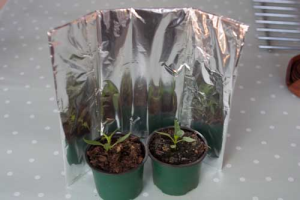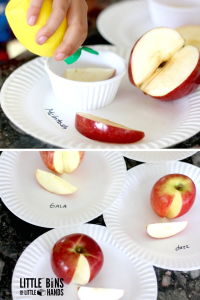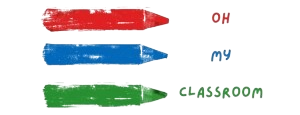STEM activities for 3rd graders provide an exciting and hands-on way to engage young minds in the fields of science, technology, engineering, and mathematics.
These activities not only spark curiosity but also foster critical thinking, problem-solving skills, and creativity.
Whether it’s building simple machines, conducting fascinating experiments, or exploring the world of coding, 3rd graders can embark on a journey of discovery and exploration that lays the foundation for a lifelong love of STEM subjects.
We will explore a variety of STEM activities tailored to the unique interests and abilities of 3rd graders, making learning both fun and educational.
Use LEGO bricks to build a marble maze

I carefully stacked colorful LEGO bricks to construct an intricate marble maze. The bricks formed a winding path filled with twists, turns, and surprises. As the marble rolled along, it encountered bridges, tunnels, and obstacles, making its journey both thrilling and challenging. The combination of creativity and engineering in this LEGO marble maze provided endless entertainment and encouraged problem-solving skills, all while showcasing the endless possibilities of these iconic building blocks.
Build a domino chain reaction that includes at least one domino tower

Certainly! Imagine a thrilling domino chain reaction that begins with a towering structure of colorful dominoes. At its apex, a carefully balanced tower comprised of carefully stacked dominoes teeters on the edge of excitement. As the first domino is gently tipped, it cascades down, triggering a mesmerizing sequence of events. The falling dominoes release marbles that follow intricate pathways, knocking down more dominoes in their wake. The tower’s collapse creates a breathtaking spectacle as it sends ripples of energy throughout the chain reaction, with each falling domino setting off the next, until a grand finale is reached. This domino chain reaction showcases the captivating blend of physics, engineering, and creativity that can be found in such intricate setups.
Use pipe cleaners to create at least 6 types of 3-D shapes

With a handful of colorful pipe cleaners, you can effortlessly craft a variety of 3-D shapes that are both fun and educational. Start by bending and twisting one pipe cleaner into a cube, showcasing its six equal square faces. Then, fashion another into a pyramid with triangular sides, and a third into a rectangular prism, highlighting its six faces, including rectangles and squares. Continue by shaping a cylinder with a circular base and a cone with a single curved surface. Finally, challenge your creativity by crafting a sphere, the most challenging yet rewarding shape to form with pipe cleaners. These hands-on activities not only introduce young learners to geometric shapes but also encourage fine motor skills and spatial understanding.
Related: 20 Innovative 3rd Grade Classroom Ideas
In five minutes, build the tallest tower you can using only pipe cleaners

In just five minutes, I carefully twisted and stacked pipe cleaners to construct a towering structure that stretches upwards with a delightful wobble. The colorful pipe cleaners formed a whimsical and unconventional tower that stood tall, showcasing the flexibility and creativity that these materials can offer. Though it may not reach skyscraper heights, it embodies the essence of playful experimentation and innovation, proving that even with limited time and resources, you can create something intriguing and unique.
Find a way to make a ping pong ball roll down a cardboard ramp as slowly as possible

To make a ping pong ball roll down a cardboard ramp as slowly as possible, you can employ several methods to increase the friction between the ball and the surface of the ramp. One approach is to roughen the surface of the ramp by attaching sandpaper or adhesive-backed grip tape to it. This added texture will create more resistance and slow down the ball’s descent. Additionally, you can angle the ramp at a shallow incline, reducing the gravitational force pulling the ball downhill. Experiment with the angle and the surface texture until you achieve the desired slow roll, allowing for a controlled and intriguing journey down the ramp.
Build an igloo using toothpicks and marshmallows

Creating a toothpick and marshmallow igloo is a delightful winter-themed project. Begin by sticking toothpicks vertically into a flat surface to form a circular base, then connect their tops with marshmallows, securing them in place. Gradually build upward, curving the structure inward to create the iconic dome shape of an igloo. Add marshmallow “bricks” between the layers to strengthen the structure. Continue this process until you’ve built a cozy, edible igloo. Not only is this a fun and creative activity, but it also provides a sweet reward once your mini igloo is complete!
Design a new kind of plant using aluminum foil

Imagine a futuristic aluminum foil plant that thrives in extreme environments. This plant would feature aluminum foil-like leaves, which serve as highly reflective surfaces, deflecting excess sunlight and reducing heat absorption. These specialized leaves would also have tiny channels, enabling them to efficiently capture and store rainwater for prolonged periods. The plant’s aluminum foil stem would be strong and flexible, adapting to harsh weather conditions. Its roots would incorporate aluminum nanoparticles to enhance nutrient absorption and resistance to soil toxins. This innovative plant would be ideal for arid deserts and urban environments, showcasing the remarkable potential of biomimicry and materials science in sustainable agriculture.
Use duct tape to design a new kind of water bottle carrier

With duct tape, you can create a versatile and rugged water bottle carrier that’s perfect for outdoor adventures. Start by cutting a length of duct tape and folding it in half lengthwise, sticky side in. This creates a sturdy strap. Attach the ends of the strap to the sides of your water bottle, securing them with more tape for added durability. Then, fashion a simple loop at the top of the strap to slide your hand or fingers through, allowing for easy carrying. Add extra layers of duct tape for reinforcement and personalization. This DIY water bottle carrier will withstand the rigors of hiking, biking, or any other activity, ensuring that you stay hydrated while on the go.
Related: 25 Easy Stem Activities for 2nd Graders
Build a Paper Roller Coaster

Constructing a paper roller coaster is an exciting and educational project. Start by designing a series of track segments using sturdy cardstock paper. Create loops, twists, and turns while ensuring each segment fits seamlessly with the others. Assemble your roller coaster structure using tape or glue, ensuring it’s stable and secure. Experiment with various design elements like hills, drops, and banked turns to provide an exhilarating ride for a small marble or bead. Customize your roller coaster with decorative elements like tunnels, flags, or even a theme park backdrop. Building a paper roller coaster is a fantastic way to learn about physics, engineering, and creativity while having a blast with hands-on fun.
Build a tower of cups as tall as you

Building a tower of cups as tall as you can be a fun and challenging activity. Start by stacking cups one on top of another, ensuring they are stable before adding more. Gradually build upwards, making sure to maintain balance and stability as the tower grows. It’s essential to stack the cups evenly and symmetrically to prevent the tower from toppling. Experiment with different cup sizes and stacking techniques to see how high you can go. This activity not only tests your spatial awareness and fine motor skills but also offers a great opportunity for creativity and problem-solving as you strive to build a towering masterpiece.
Build a Balloon Car

Building a balloon car is a fun and educational project that demonstrates the principles of physics and engineering. Begin by creating a chassis using lightweight materials like cardboard or plastic. Attach four small wheels to the chassis, ensuring they spin freely. Then, make a simple propulsion system by attaching a straw to the car’s top and securing a deflated balloon to the rear. When you blow up the balloon and release it, the escaping air propels the car forward. Experiment with different designs and sizes to see how they affect the car’s speed and distance. This hands-on activity teaches kids about the relationship between air pressure and motion while sparking their creativity.
Paper Airplanes Why Flaps and Folds Matter

In the world of paper airplanes, flaps and folds matter significantly because they determine the aerodynamics and flight characteristics of your creation. Every fold and flap contributes to the plane’s stability, lift, and overall performance. For example, the wing’s angle of incidence, created by the folds, affects how the plane generates lift and stays aloft. Folds in the tail and wingtips impact stability and control during flight. Precision in folding and shaping ensures that the paper airplane follows a predictable flight path. Exploring various folds and flaps allows you to experiment with different designs and understand the fundamental principles of aerodynamics, making the art of paper airplane construction both educational and entertaining.
Make a mini basketball hoop with pipe cleaners

Crafting a mini basketball hoop using pipe cleaners is a simple and enjoyable project. Start by shaping a pipe cleaner into a circular hoop shape, making sure the ends overlap to secure the form. You can adjust the size to your preference. Then, create a small loop at the top to hang the hoop on a suitable surface, like a doorknob or a hook. Attach it securely, and you’re ready to shoot some mini hoops with a small ball. It’s a quick and creative way to add a bit of basketball fun to your indoor space, and you can easily customize the hoop’s size and color with different pipe cleaner options.
Build a mini 3D replica of your family using playdough

Creating a mini 3D replica of your family using playdough can be a delightful and imaginative activity. Start by selecting various colors of playdough to represent each family member. Shape and mold the playdough into miniature figures, paying attention to details like hairstyles, clothing, and facial features. You can use small accessories like beads for eyes or buttons for clothing to add realism. Arrange these miniatures in a family grouping, perhaps seated around a playdough table or engaged in various activities that reflect your family’s unique personalities and interests. This creative project not only hones fine motor skills but also fosters a sense of togetherness and storytelling as you bring your playdough family to life.
Make a Lego car and power it with a balloon

Crafting a Lego car powered by a balloon is an exciting and hands-on engineering project. Begin by constructing a simple vehicle using Lego bricks, ensuring it has space for a balloon to be attached at the rear. Then, secure a deflated balloon onto a straw using tape, and attach the straw to the back of the Lego car. Once everything is in place, inflate the balloon by blowing into the straw, then quickly release the air. The escaping air propels the car forward, demonstrating the principles of thrust and motion. It’s a fantastic way to blend creativity and science while having a blast with a DIY balloon-powered Lego car.
Build your name with Legos

Constructing your name with Legos is a creative and personalized project. Start by selecting Lego bricks that match the colors you want for each letter. Then, lay out the bricks in the shape of each letter of your name. You can use flat bricks for the base and stack others to form the letters. Experiment with different sizes and styles of Lego letters to make your name unique and visually appealing. Whether you choose a bold, blocky design or a more intricate script, building your name with Legos is a fantastic way to showcase your creativity and love for this iconic toy.
Make a Paper Helicopters
Paper helicopters are simple yet fascinating paper crafts that can be used to demonstrate basic principles of aerodynamics. These miniature helicopters typically consist of a sheet of paper folded into a specific shape, with a rotor blade at the top. When dropped from a height, the paper helicopter spins as it descends due to the forces of gravity and air resistance. These toys provide an excellent opportunity for hands-on learning and experimentation, allowing children and students to explore concepts such as gravity, air resistance, and the effects of weight distribution on flight. Paper helicopters are not only educational but also fun and engaging, making them a popular choice for science experiments and classroom activities.
Apple Browning Experiment

An apple browning experiment is a common science project that explores the enzymatic browning process in apples. When an apple is cut or bruised, it releases an enzyme called polyphenol oxidase, which reacts with oxygen in the air to produce brown pigments. In this experiment, you typically cut an apple into several pieces, leaving some exposed to the air and others treated with substances like lemon juice, which contains vitamin C and acts as an antioxidant. Over time, you observe and compare the browning rates of the different apple slices to understand the role of enzymes, oxidation, and antioxidants in the browning process. This experiment provides valuable insights into food science, enzymatic reactions, and the preservation of fruits and vegetables.
Pumpkin Clock

A pumpkin clock is a creative and educational project that combines Halloween fun with learning about electricity and circuits. To make one, you typically carve out a small pumpkin and turn it into a clock face, adding numbers and clock hands. Inside the pumpkin, you place a simple battery-operated clock movement mechanism. Then, you attach LED lights to the clock hands to act as hour and minute indicators. By connecting the LEDs to the clock’s power source, you can create a unique and functional pumpkin clock that not only tells time but also showcases the principles of electrical circuits. This DIY project is a fantastic way to engage in hands-on science and craft activities during the Halloween season.
Building a Hand Crank Winch

Building a hand crank winch is a practical and rewarding DIY project that can have various applications, from hoisting heavy objects to raising flags or even creating a simple well. To construct one, you’ll need a sturdy base or frame, a drum or spool for winding the cable or rope, and a handle for cranking. The key is to ensure that the handle is attached to a gear mechanism, allowing for easy rotation and efficient winding. By turning the handle, you can wind the cable onto the drum, creating a mechanical advantage that makes lifting heavy loads more manageable. This hand crank winch is a useful tool for both practical applications and educational purposes, as it demonstrates fundamental principles of mechanical engineering and leverage.
Magnetic Slime

Magnetic slime is a unique and engaging material that combines the fun of slime with the properties of magnetism. To create magnetic slime, you typically mix iron oxide powder with a standard slime recipe, which typically includes ingredients like glue, borax, and water. The iron oxide powder gives the slime magnetic properties, allowing it to be attracted to magnets. This opens up a world of interactive possibilities, as you can use magnets to control and manipulate the slime, making it stretch, dance, and even move like a living creature. Magnetic slime is not only entertaining but also provides an opportunity to learn about the properties of magnets, materials science, and the fascinating world of non-Newtonian fluids like slime. It’s a favorite among science enthusiasts and a creative way to explore the principles of magnetism.
Related: 100 Best 3rd Grade Questions of The Day

